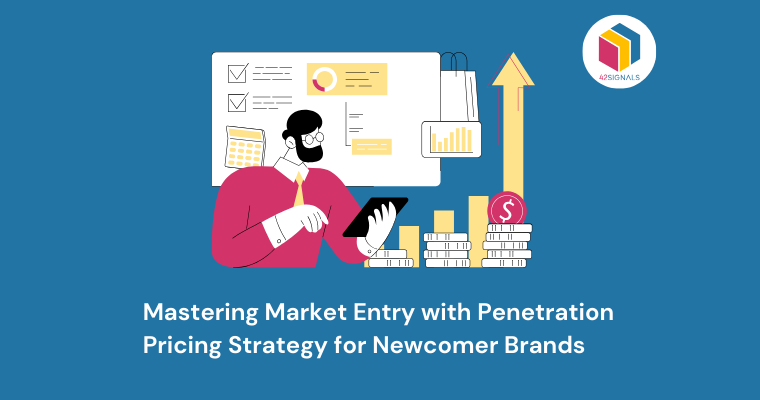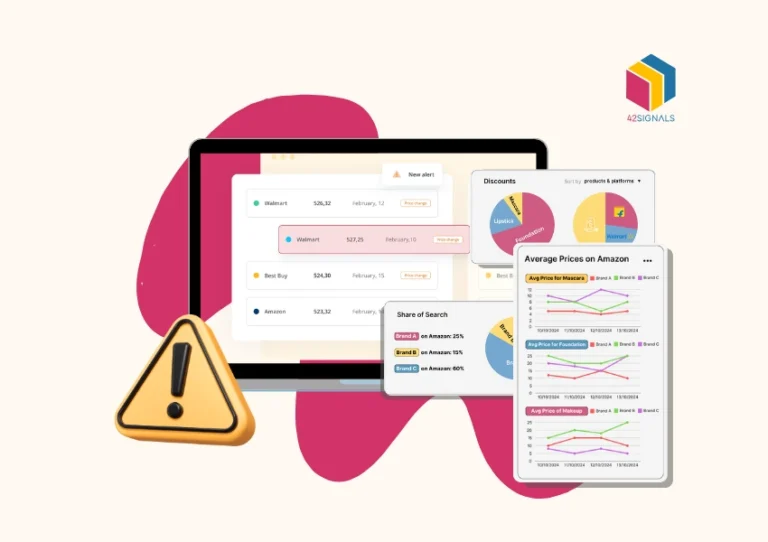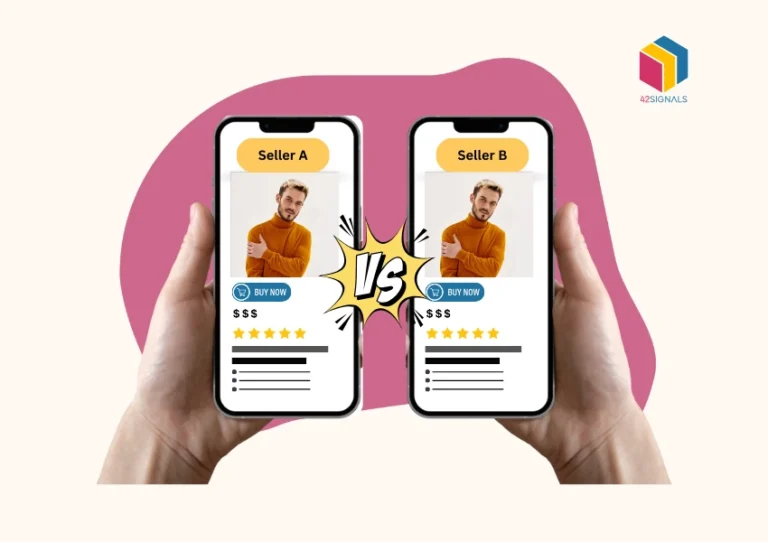Table of Contents
ToggleEntering a new market can be a daunting task for any brand, especially for newcomers. However, with the right penetration pricing strategy, new brands can successfully penetrate the market, gain a foothold, and compete against established players.
One such pricing strategy is the penetration pricing strategy. Let’s explore what penetration pricing is, its benefits and drawbacks, and how newcomer brands can effectively use it to master their market entry strategies.
What is Penetration Pricing?

Image Source: Shopify
Penetration pricing is a marketing tactic where a company sets a low initial price for a product or service to quickly attract a large number of customers and increase market share. The primary goal of this approach is to enter the market rapidly, build brand awareness, and establish a customer base before competitors respond. Once the brand has gained significant market share and customer loyalty, it can gradually raise prices without losing too many customers.
Benefits of Penetration Pricing Strategy
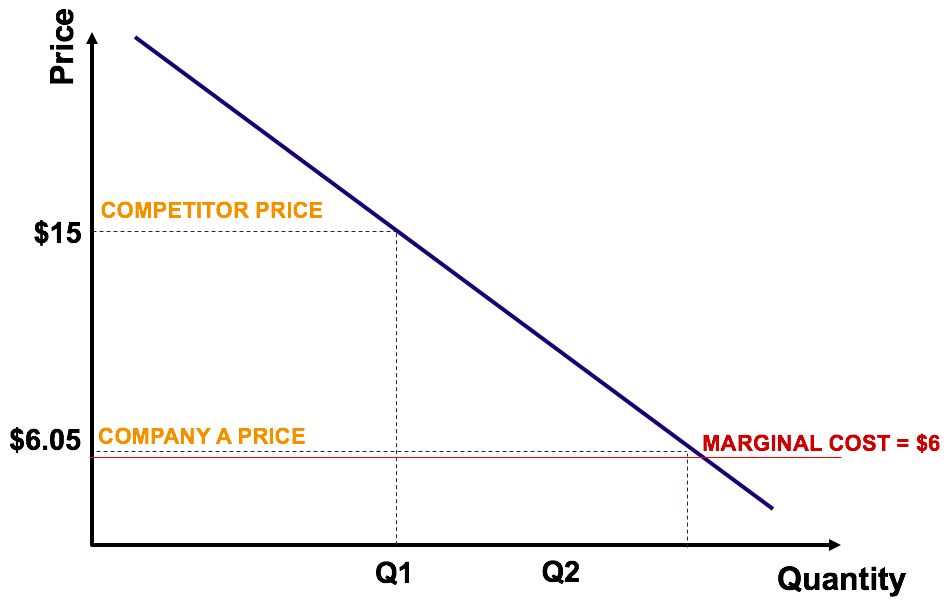
Image Source: Corporate Finance Institute
There are several advantages associated with using a penetration pricing strategy for newcomer brands:
1. Rapid Market Penetration
As mentioned earlier, setting a low initial price helps attract a larger audience in a shorter time frame. By doing so, newcomer brands can create buzz around their products and services, generate sales, and become known within their target markets.
- Mechanism: The low price acts as a powerful incentive, significantly lowering the perceived risk for trial among new customers, especially for unproven brands or innovative products. It directly targets price-sensitive segments and converts them swiftly.
- Beyond Buzz to Critical Mass: Achieving rapid sales volume isn’t just about noise; it’s about reaching a critical mass of users. This is particularly vital for:
- Network Effect Products: Services like social media platforms, marketplaces, or communication tools become exponentially more valuable as more users join. Penetration pricing fuels this virtuous cycle.
- Experience Goods: Products whose true value is only understood through use (e.g., software, premium content subscriptions). A low barrier to entry encourages trial, allowing the product to demonstrate its worth.
- Commoditized Markets: In crowded spaces with similar offerings, price becomes the primary differentiator for initial trial.
- Channel Leverage: High initial sales volumes can provide leverage with distributors and retailers. Demonstrating strong consumer pull makes it easier to secure valuable shelf space (physical or digital) and favorable terms.
- Cash Flow Generation: While margins are thin, the rapid influx of sales generates crucial early cash flow, which can be reinvested in scaling operations, marketing, or R&D.
2. Increased Brand Awareness
Lower prices often lead to higher sales volumes, which in turn increases brand visibility. With increased exposure, more potential customers learn about the brand, further solidifying its position in the market.
- The Volume-Visibility Loop: High sales volume naturally translates into increased visibility. This occurs through:
- Marketplace Algorithms: High sales velocity boosts product ranking on platforms like Amazon, eBay, and Alibaba, leading to even more organic visibility.
- Search Engine Optimization (SEO): Increased online sales often correlate with more reviews, social mentions, and backlinks, improving organic search rankings for the brand and products.
- Social Proof & Word-of-Mouth: Seeing a product selling well acts as social validation, encouraging others to try it. Satisfied customers from the initial wave become organic brand advocates.
- Retailer Promotions: Retailers are more likely to feature fast-selling products in their promotional materials (flyers, homepage banners, email campaigns), amplifying reach.
- Cost-Effective Customer Acquisition: While CAC (Customer Acquisition Cost) per unit might be high initially due to low margins, the sheer volume of customers acquired rapidly builds the user base. The lifetime value (LTV) of these customers becomes the key metric to justify the initial investment.
3. Customer Loyalty
By offering affordable prices initially, newcomer brands have the opportunity to convert first-time buyers into loyal customers who continue purchasing from them even after they increase their prices. Additionally, these satisfied customers may recommend the brand to others, generating positive word-of-mouth advertising.
- The First Impression Advantage: The initial low price gets customers in the door, but loyalty is built on the post-purchase experience. This critical period allows the brands to create the perfect penetration pricing strategy by:
- Demonstrate Superior Value: Exceed expectations on quality, features, or service relative to the price paid (even if low).
- Deliver Excellent Customer Service: Provide seamless support, easy returns, and responsive communication to build trust.
- Create Habitual Use: For consumables or services, encourage regular usage patterns that become ingrained.
- Switching Costs: Once integrated into a customer’s routine or ecosystem (e.g., accumulating data in a software platform, building a profile on a service), the perceived hassle or cost of switching to a competitor increases, even if prices rise later.
- Community Building: Rapid user acquisition facilitates the creation of user communities (forums, social groups) where loyalty is reinforced through peer interaction and brand engagement.
- Upsell/Cross-Sell Opportunities: A large, established customer base provides a fertile ground for introducing higher-margin products, premium tiers, or complementary services later.
4. Competitive Advantage
Setting lower prices than competitors using competitive intelligence allows newcomer brands to differentiate themselves and stand out in crowded markets. It also forces incumbent businesses to reconsider their pricing strategies, potentially creating opportunities for disruption.
- Immediate Market Share Grab: The low price directly siphons customers from competitors, forcing them to react defensively. This can be particularly destabilizing for incumbents with high cost structures or rigid pricing models.
- Barriers to Competitive Response: Incumbents may struggle to match the low price without damaging their profitability, brand image (if associated with premium), or channel relationships. Their response time might be slow due to bureaucracy.
- Signaling Commitment: Aggressive penetration pricing signals the entrant’s seriousness and commitment to capturing market share, potentially deterring some competitive responses or discouraging other new entrants.
- Cost Leadership Foundation: Successfully operating at low margins often necessitates operational efficiencies and cost control from day one. If sustained, this can evolve into a sustainable long-term cost leadership advantage.
5. Reduced Marketing Costs
Since penetration pricing relies heavily on price as a promotional tool, newcomer brands save money by reducing their investments in traditional marketing channels like television ads, billboards, and print media.
- Inherent Virality: The appeal of a “great deal” has inherent viral potential and can be a good penetration pricing strategy. Customers are more likely to spontaneously share news of a bargain with friends and family, generating organic reach.
- Focus on Core Value: While traditional brand-building ads (emphasizing image, lifestyle) can be expensive and slow to yield results, penetration pricing allows marketing efforts to focus sharply on communicating the core value proposition: high quality at an unbeatable price. This message is simpler and often more immediately compelling for new entrants.
- PR & Earned Media: A disruptive pricing strategy is inherently newsworthy, potentially generating significant free PR and media coverage (“New Brand Shakes Up Market with Low Prices”).
- Optimizing Paid Spend: Paid advertising (digital, social) can be highly targeted and efficient when the core message (low price/high value) has strong inherent conversion power. Budgets can be focused on performance channels, driving direct sales.
What are the Drawbacks of a Penetration Pricing Strategy?
While there are numerous benefits to a penetration pricing strategy, some downsides must be considered:
1. Profit Margin Constraints
Low prices mean reduced profit margins per unit sold. To offset this, newcomer brands need to sell high volumes of their products or services to maintain financial stability during the early stages of market entry.
- The Volume Imperative: Success absolutely hinges on achieving very high sales volumes quickly. Underestimating the required volume or failing to achieve it can lead to unsustainable losses.
- Cash Burn Risk: Thin margins mean the business burns cash faster per unit sold in the early stages. Robust funding is essential to weather this period until scale efficiencies kick in or prices can rise.
- Mitigation: Precise financial modeling, securing sufficient capital, relentless focus on operational efficiency, and having a clear path to future margin improvement (e.g., cost reductions, value-added services) are non-negotiable.
2. Perceived Quality Issues
Consumers sometimes associate low prices with inferior quality. Therefore, newcomer brands employing a penetration pricing strategy must work extra hard to convince potential customers that their offerings provide value despite being priced lower than alternatives.
- Deep-Seated Bias: The association between low price and low quality is a persistent consumer heuristic. Overcoming this requires more than just stating “we’re good.”
- Mitigation Strategies:
- Superior Product/Service: The offering must demonstrably exceed expectations for the price point. Quality cannot be compromised.
- Strategic Branding & Positioning: Invest in professional branding, packaging, and user experience that signal quality and trustworthiness, even at a low price. Focus messaging on value (benefits vs. cost), not just low cost.
- Third-Party Validation: Leverage reviews, testimonials, influencer partnerships, and awards aggressively to build credibility.
- Transparency: Explain why the price is low (e.g., direct-to-consumer model, efficient operations, introductory offer) without sounding defensive.
3. Potential Retaliation from Established Players
Incumbent businesses might react negatively to newcomer brands’ aggressive penetration pricing strategy tactics. They could retaliate by slashing their prices or launching counterattacks aimed at undermining the newer entrants’ credibility and reputation.
- Types of Retaliation: Incumbents can respond with price matching or undercutting, increased marketing spend (FUD campaigns – Fear, Uncertainty, Doubt), lobbying for regulatory hurdles, exclusive deals with suppliers/distributors, or rapid feature matching/improvement.
- Mitigation Strategies:
- Anticipate Moves: Conduct thorough competitive intelligence and scenario planning. Have contingency plans ready.
- Build Defensible Advantages: Focus on building unique value beyond price (superior UX, community, proprietary tech, exclusive content) that competitors cannot easily replicate.
- Secure Key Partnerships: Lock in key supplier or distribution agreements if possible.
- Target Niche First: Consider starting in a less contested niche within the broader market to establish a foothold before facing the full force of incumbents.
4. Difficulty Raising Prices Later
If not executed carefully, increasing prices later on can lead to backlash from customers who become accustomed to paying less. Thus, timing and communication are crucial when transitioning away from a penetration pricing strategy.
- Customer Entitlement: Early adopters accustomed to the low price may feel entitled to it indefinitely and react negatively (churn, backlash) when prices increase.
- Value Perception Shift: The initial low price sets an anchor point. Raising prices shifts the value proposition, requiring a clear justification.
- Mitigation Strategies:
- Communicate Clearly & Early: Be transparent about the introductory nature of the price. Signal well in advance that prices will rise as value increases or costs are incurred (e.g., “Introductory Launch Price,” “Founders’ Rate”).
- Phase Increases Gradually: Implement smaller, incremental price hikes rather than one large jump.
- Add Value First: Introduce significant new features, services, or benefits before raising prices. Frame the increase as paying for demonstrably enhanced value.
- Segment Pricing: Offer loyalty discounts to early customers or create tiered pricing plans where the base tier remains accessible while higher-value tiers capture more revenue.
- Grandfather Existing Customers: Where feasible, maintain the original price for existing customers for a period while applying the increase only to new customers.
- Focus on Loyalty: By the time prices rise, the goal is to have built such strong loyalty based on product/service quality and experience that price sensitivity is reduced for the core customer base.
Implementing Penetration Pricing Strategies for New Brands
To successfully implement a penetration pricing strategy, newcomer brands should consider the following steps:
Identify Target Customers
Understand your ideal buyer persona and tailor your pricing accordingly. Ensure that your low introductory price still generates enough revenue to cover costs while remaining attractive to your desired demographic.
Set Clear Goals
Define specific objectives for your market entry campaign and penetration pricing strategy, such as gaining X% market share within Y months or achieving Z sales volume within the first six months. Having clear goals enables you to measure progress and adjust your strategy if needed.
Monitor Competitors
Keep track of rival companies’ pricing strategies and adapt yours accordingly. Be prepared to modify your approach based on changes in the competitive landscape.
Communicate Value Proposition
Clearly articulate the unique selling points (USPs) of your products or services. Emphasize how they deliver exceptional value compared to competitors, justifying the initial lower price point.
Gradually Increase Prices
Plan for when and how you will transition away from your introductory pricing, which is a key part of your penetration pricing strategy. Incrementally raising prices over time reduces the risk of alienating existing customers and maintains their trust in your brand.
Brands That Used Penetration Pricing Strategies Successfully
1. Uber’s Penetration Pricing Strategy

Image Source: SlideGeeks
Uber entered the taxi industry with an innovative ride-hailing app and aggressively discounted fares compared to traditional taxis. By offering lower prices, Uber attracted a massive user base, built brand awareness, and forced incumbents to reassess their own pricing models. Although Uber eventually raised its rates as it matured and expanded into other services like food delivery and electric bikes, its initial focus on affordability helped cement its status as a major player in urban transportation.
2. Warby Parker
Warby Parker revolutionized the eyewear industry by offering designer prescription glasses at affordable prices through its direct-to-consumer model. When the company launched in 2010, it offered five styles of frames for $95 each, including single-vision lenses – significantly cheaper than most brick-and-mortar retailers.
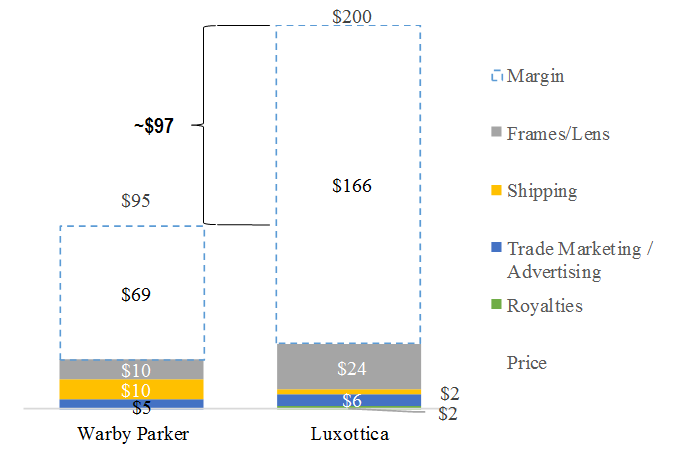
Image Source: UCLA Anderson
This strategic move allowed Warby Parker to capture market share, grow rapidly, and develop a loyal customer base that appreciated both its stylish designs and accessible pricing. Today, Warby Parker continues to expand, now operating physical stores alongside its online presence.
3. Spotify
Streaming music platform Spotify used a freemium model penetration pricing strategy upon its entrance into the market, providing basic ad-supported streaming services free of charge while charging premium users for additional features like offline listening and higher audio quality. By allowing users to access its content at no cost, Spotify attracted millions of listeners and convinced many to upgrade to paid subscriptions once they became hooked on its service.
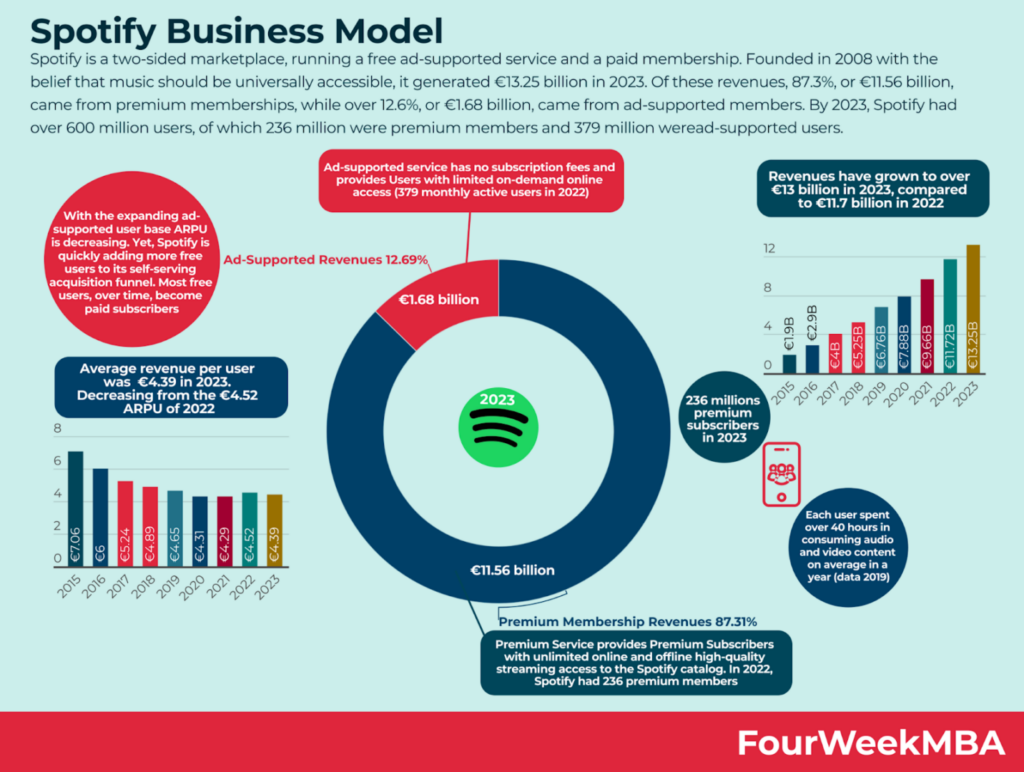
Image Source: FourWeekMBA
This approach enabled Spotify to challenge established giants like Apple Music and Pandora and secure its place as one of the leading music streaming platforms globally.
Conclusion on Penetration Pricing Strategy
These examples demonstrate how effective penetration pricing strategies can help newcomer brands break into various industries, disrupt conventional business models, and achieve lasting success. By learning from these case studies and applying best practices, emerging companies can maximize their chances of making a splash in today’s fiercely competitive marketplace.
Competitor pricing is essential to create a name for your brand and that’s where 42Signals can be of great value. Simply Schedule a demo to learn more about our services.
